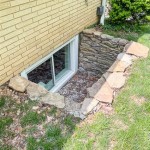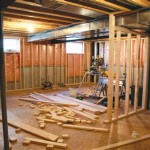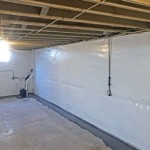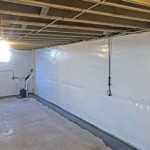What R-Value For Basement Ceiling?
The R-value of a basement ceiling is a measure of its thermal resistance. The higher the R-value, the better the insulation and the less heat that will transfer through the ceiling. For a basement ceiling, an R-value of at least 25 is recommended in most climate zones.
There are a number of different materials that can be used to insulate a basement ceiling, including fiberglass batts, cellulose, and spray foam. Fiberglass batts are the most common type of insulation, and they are relatively inexpensive and easy to install. Cellulose is a loose-fill insulation that is made from recycled paper, and it is also relatively inexpensive and easy to install. Spray foam is a more expensive type of insulation, but it is also more effective. It is applied as a liquid, and it expands to fill all of the gaps and cracks in the ceiling.
The thickness of the insulation that you need will depend on the R-value that you are trying to achieve. For example, to achieve an R-value of 25, you would need to install 6 inches of fiberglass batts or cellulose, or 5 inches of spray foam.
In addition to insulating the ceiling, it is also important to seal any air leaks around the perimeter of the ceiling. This will help to prevent heat from escaping through the cracks and gaps. You can seal air leaks with caulk or weatherstripping.
Insulating your basement ceiling is a great way to save energy and make your home more comfortable. By following these tips, you can ensure that your basement ceiling is properly insulated and that you are getting the most out of your investment.
Additional Factors to Consider
In addition to the R-value, there are a few other factors to consider when choosing insulation for your basement ceiling:
- Moisture resistance: Basements are often damp, so it is important to choose insulation that is moisture resistant. Fiberglass batts and cellulose can absorb moisture, so they are not the best choices for basements. Spray foam is a good choice for basements because it is moisture resistant.
- Fire resistance: Insulation can help to slow the spread of fire, so it is important to choose insulation that is fire resistant. Fiberglass batts and cellulose are not fire resistant, but spray foam is.
- Cost: The cost of insulation varies depending on the type of insulation and the thickness. Fiberglass batts and cellulose are the most inexpensive types of insulation, while spray foam is the most expensive.
By considering all of these factors, you can choose the best insulation for your basement ceiling and ensure that your home is comfortable and energy efficient.

What R Value Do I Need Johns Manville

What R Value Is Right For A Basement Ceiling Basementing Com

Know Your R Value The House Designers

All About Insulation R Values The Home

What Is Basement Ceiling Insulation And It Worth

Insulation Levels For Cold Hot And Moderate Climates

New York Recommended Home Insulation R Values Zone 4

Insulation R Value What Is It Knauf

Envelope Pa Energy Code

How Much Insulation Does Your Home Need Guide
See Also








